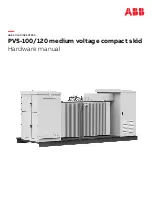
Operation
Step 1
Check to be sure the power is on for both Tx and Rx.
Step 2
Push the button on the TX to select desired channel (the Receiver can auto scan the
channel that Tx has)
Step 3
Turn on the audio amplifier at the Rx site to check the audio quality. If there is
interference such as static or buzz, switch to another channel as in Step 2 to make
sure that the audio quality is crystal clear.
Safety
Indoor use only
Clean with dry and soft cloth
No serviceable parts for customer
Digital Audio Sender Specifications
CHO4004
Transmitter (R/L)
Receiver
Description
Transmitter
Receiver
Operating temperature
-10 ~ +60 (degrees Celsius)
-10 ~ +60 (degrees Celsius)
Frequency range
2400 ~ 2483.5 MHz
2400 ~ 2483.5 MHz
Modulation
FSK (Modulation Index 0.5)
Channel number
8
8
Channel spacing
9 MHz
9 MHz
Channel frequency
2410, 2419 ~ 2473 MHz
2410, 2419~ 2473 MHz
Frequency stability
±100 KHz
±100 KHz
TX Power
+10 dBm for CE (Typical),
0 dBm for FCC (Typical)
Input impedance
>10K
Ohm
Input level
4Vp-p
(Max)
RX Sensitivity
-85 dBm (Min.)
Output impedance
<
1KOhm
Output level
3.4Vp-p
(Max)
Transmit Distance Between
Tx & Rx
100ft(Min, LOS)
Response (station)
20 ~ 20 KHz, ±3dB
Dynamic range (station)
45dB (Min)
Separation (station)
45dB (Min)
S/N ratio (station)
45dB (Min)
THD (station)
0.6% (Min)
Power supply
AC
120V@60Hz
or
230@50Hz / DC
9V, 200mA
PLUG: 5.5mmx2.1mmx11mm
Polarity: Outside Jack(-) Inside Jack(+)
NOTE:
Any changes or modifications not expressly approved by the party responsible for
compliance could void the user’s authority to operate the equipment.
To avoid interference, keep the device away from sources of interference such as wireless
LAN AP, microwave ovens, etc. To comply with the FCC RF exposure compliance
requirements, this device and its antenna must not be co-located or operated in conjunction
with any other antenna or transmitter.
3





















